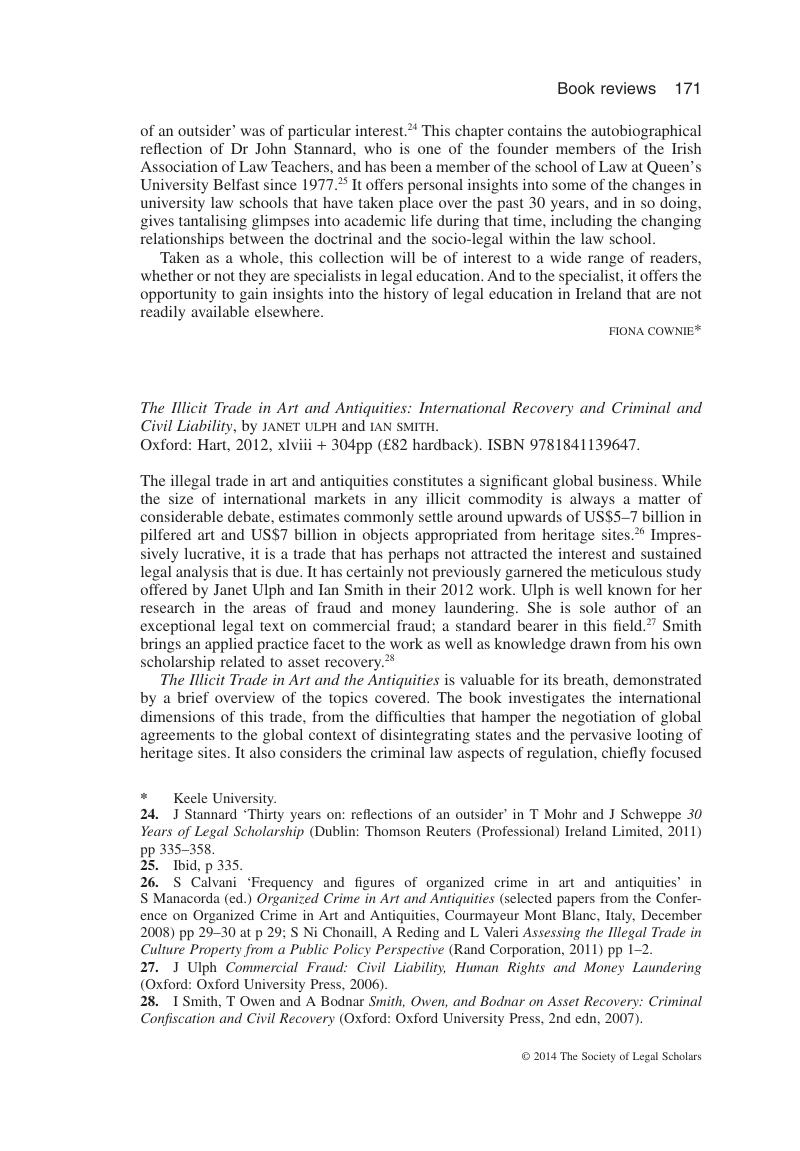No CrossRef data available.
Published online by Cambridge University Press: 02 January 2018

26. Calvani, S ‘Frequency and figures of organized crime in art and antiquities’ in Manacorda, S (ed.) Organized Crime in Art and Antiquities (selected papers from the Conference on Organized Crime in Art and Antiquities, Courmayeur Mont Blanc, Italy, December 2008) pp 29–30 at p 29;Google Scholar Ni Chonaill, S, Reding, A and Valeri, L Assessing the Illegal Trade in Culture Property from a Public Policy Perspective (Rand Corporation, 2011) pp 1–2.Google Scholar
27. Ulph, J Commercial Fraud: Civil Liability, Human Rights and Money Laundering (Oxford: Oxford University Press, 2006).Google Scholar
28. Smith, I, Owen, T and Bodnar, A Smith, Owen, and Bodnar on Asset Recovery: Criminal Confiscation and Civil Recovery (Oxford: Oxford University Press, 2nd edn, 2007).Google Scholar
29. The global money laundering regulatory edifice is contained largely in four international conventions. Shortly after the first convention was forged, the G-7 group of nations formed an entity, the Financial Action Task Force, to protect the financial system from money laundering activity and to guide the evolution and implementation of anti-money laundering regulations. Although a non-state actor, that task force has since become the dominant source of regulatory norms: see Convention against Illicit Traffic in Narcotic Drugs and Psychotropic Substances, 11 November 1990; Convention against Transnational Organized Crime, 29 December 2003; Convention against Corruption, 14 December 2005; Convention for the Suppression of Terrorist Financing, 10 April 2002; International Standards on Combating Money Laundering and the Financing of Terrorism and Proliferation – the Faft Recommendations, Financial Action Task Force, 16 February 2012.
30. J Ulph and I Smith The Illicit Trade in Art and Antiquities: International Recovery and Criminal and Civil Liability (Oxford: Hart, 2012) pp 101–116; see also pp 266–269.
31. Ibid, p 103.
32. Ibid, pp 110–111.
33. Ibid, pp 117–119.
34. Ibid, pp 190–195
35. Ibid, p 188.
36. Ibid, pp 212–214.
37. Ibid, pp 239–248.